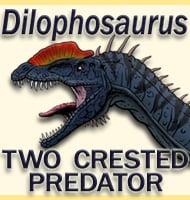Zapalasaurus
In Depth Zapalasaurus is another example of an early cretaceous era diplodocoid sauropod, a find significant in itself since many diplodocid genera are dated to the Late Jurassic. Further to its inclusion within the Diplodocoidea, Zapalasaurus has been included as a member of the Rebbachisauridae, a sub group of the Diplodocoidea that includes other Cretaceous … Read more
